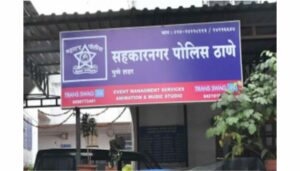Bridging gender and social category gaps at all levels of school education is one of the major objectives of the scheme. The scheme reaches out to girls and children belonging to Scheduled Caste (SC), Scheduled Tribe (ST), minority communities and transgender. The scheme also gives attention to urban deprived children, children affected by periodic migration and children living in remote and scattered habitations. Under the scheme, provision has been made for giving preference to Special Focus Districts (SFDs), Educationally Backward Blocks (EEBs), LWE affected districts, and aspirational districts while planning interventions like setting up of primary schools, upper primary schools, construction of additional classrooms, toilets, Kasturba Gandhi Balika Vidyalayas (KGBVs).
The Samagra Shiksha scheme supports States for strengthening of school infrastructure including in rural areas. The scheme provides for infrastructural strengthening of existing government schools based on the gaps determined by Unified District Information System for Education (UDISE) and proposals received from respective States/UTs. The scheme also provides for annual maintenance and repair of existing school buildings, toilets and other facilities to upkeep the infrastructure in good condition.
Samagra Shiksha focuses on improvement in quality of education by providing support for different interventions like in-service training of teachers and school heads, conduct of achievement surveys at state and national level, composite school grant to every school for providing a conducive learning environment, grants for library, sports and physical activities, support for Rashtriya Avishkar Abhiyan, ICT and digital initiatives, School Leadership development programme, remedial teaching for academically weaker students, support for Padhe Bharat Badhe Bharat, etc.
Besides, the following are some of the steps taken to improve infrastructure and the quality of primary education:-
Since the inception of the erstwhile Centrally Sponsored Scheme, Sarva Shiksha Abhiyan, in 2001 till 31.03.2018, construction of 3.12 lakh school buildings, 18.87 lakh additional classrooms, provision of 2.42 lakh drinking water facility, construction of 3.95 lakh Boys’ toilets, 5.18 lakh separate girls’ toilets and 1.41 lakh CWSN toilets have been sanctioned to States and UTs, out of which States and UTs have reported construction of 2.94 lakh school buildings, 18.03 lakh additional classrooms, provision of 2.35 lakh drinking water facility, construction of 3.76 lakh Boys’ toilets, 5.07 lakh separate girls’ toilets and 1.21 lakh CWSN toilets.
The Central rules to the RTE Act, 2009 have been amended on 20th February, 2017 to include reference on class-wise and subject-wise learning outcomes, which have accordingly been finalised for all subjects upto the elementary stage and shared with the states and UTs.
National Achievement Survey for classes 3, 5 & 8 based on Learning Outcomes was conducted on 13thNovember, 2017 to enable States & UTs to identify gaps in learning outcomes at district level and design strategies to address these gaps.
Section 23(2) of the RTE Act has been amended to extend the period of training of untrained in-service elementary teachers to 31st March, 2019.
The National Institute of Open Schooling (NIOS) has been entrusted to conduct this training through Open and Distance Learning (ODL) mode. The online D.El.Ed course has been started from 3rdOctober, 2017. More than 13 lakh teachers have joined these courses.
This information was given by the Union Minister for Human Resource, Dr Ramesh Pokhriyal ‘Nishank’ in a written reply in the Lok Sabha today.








